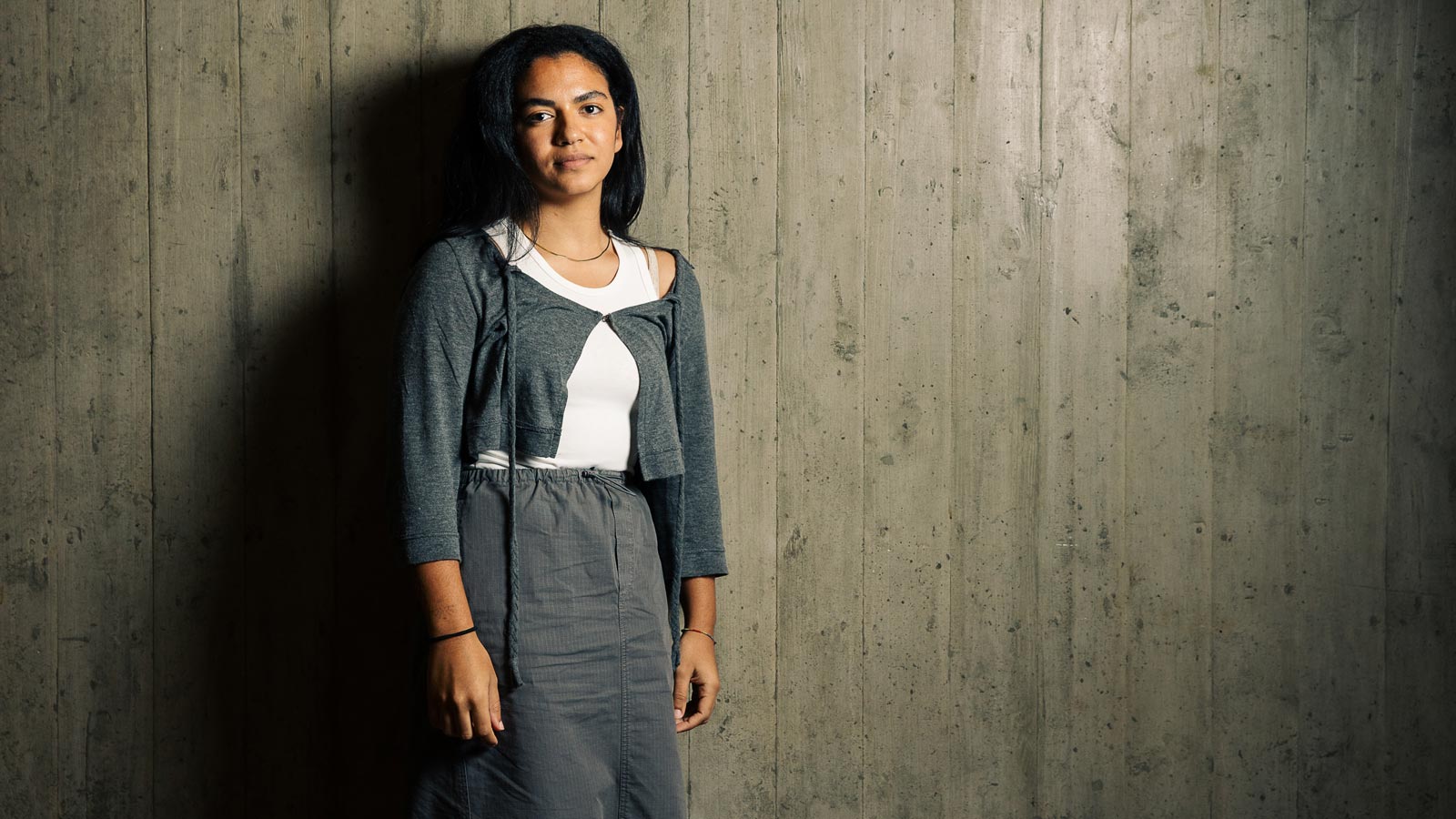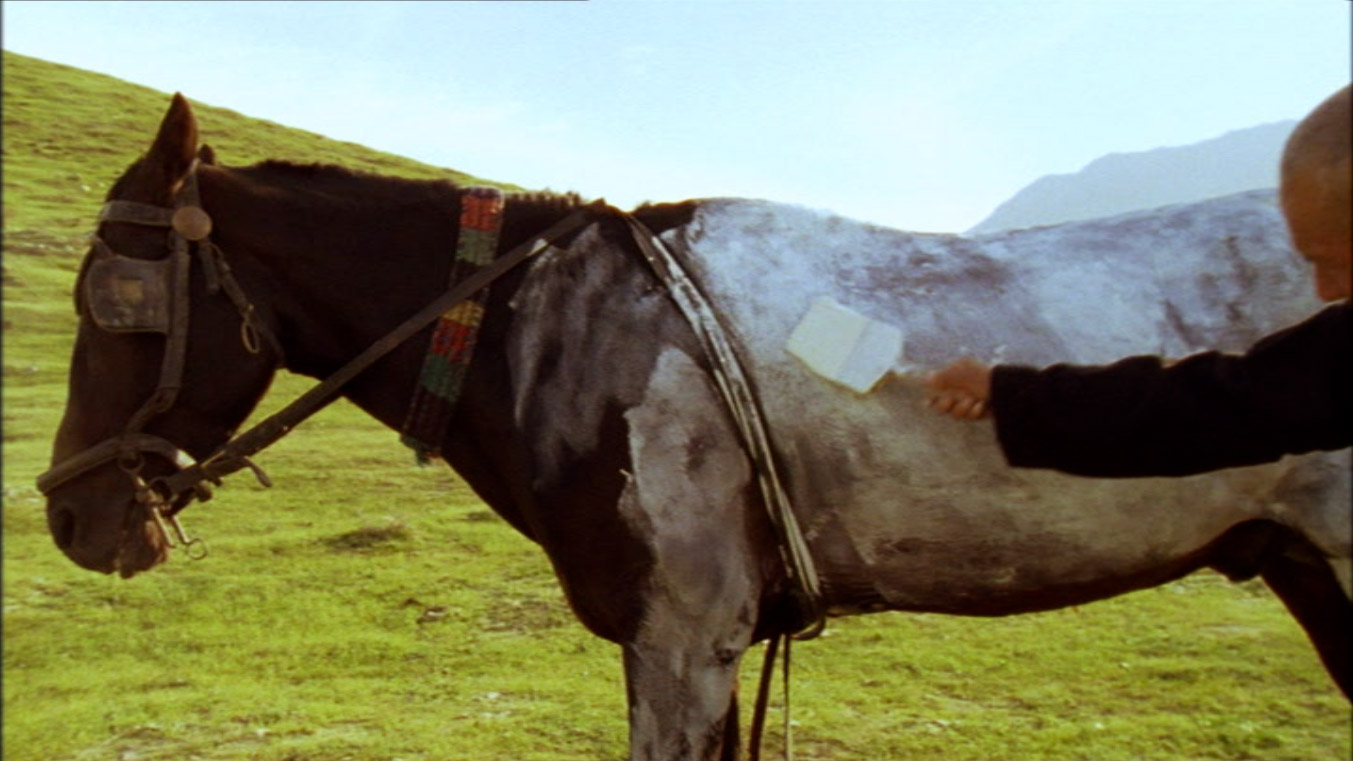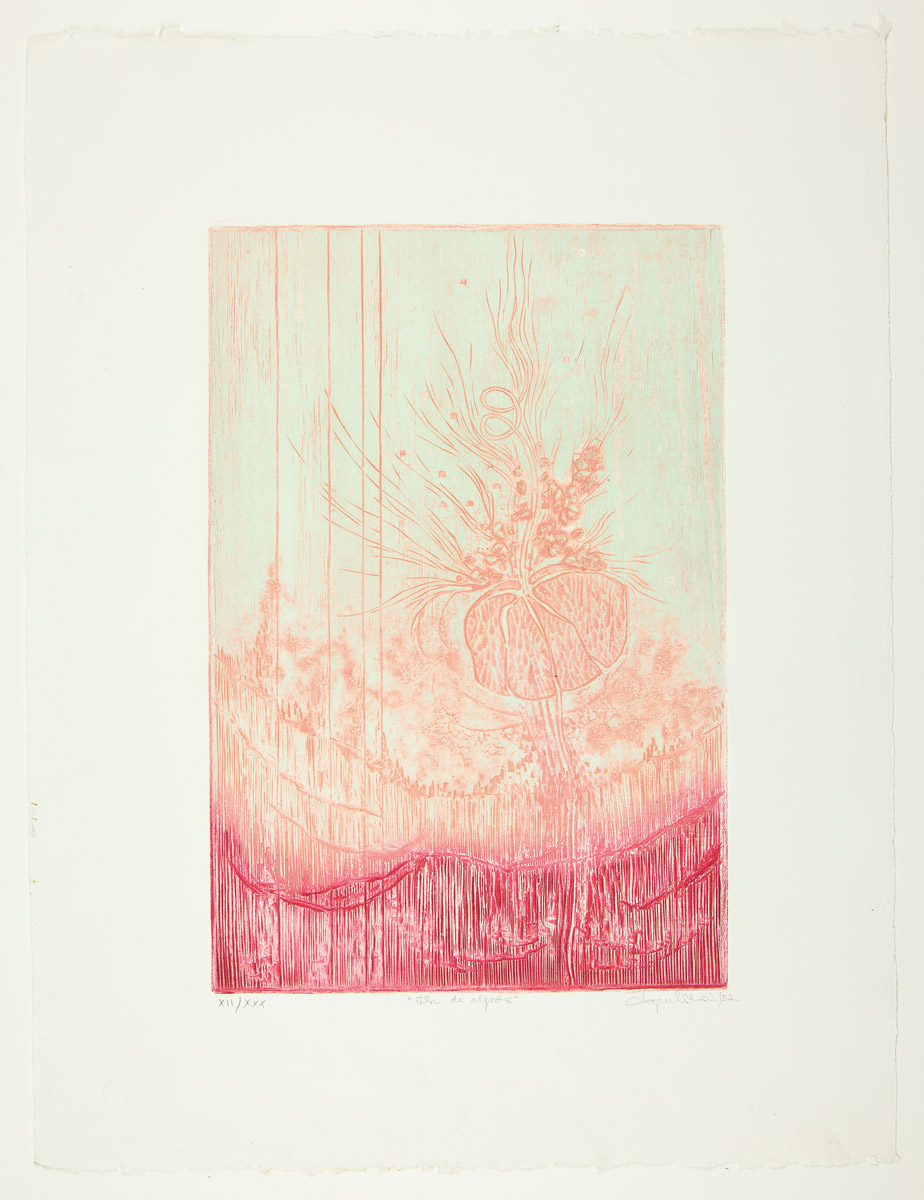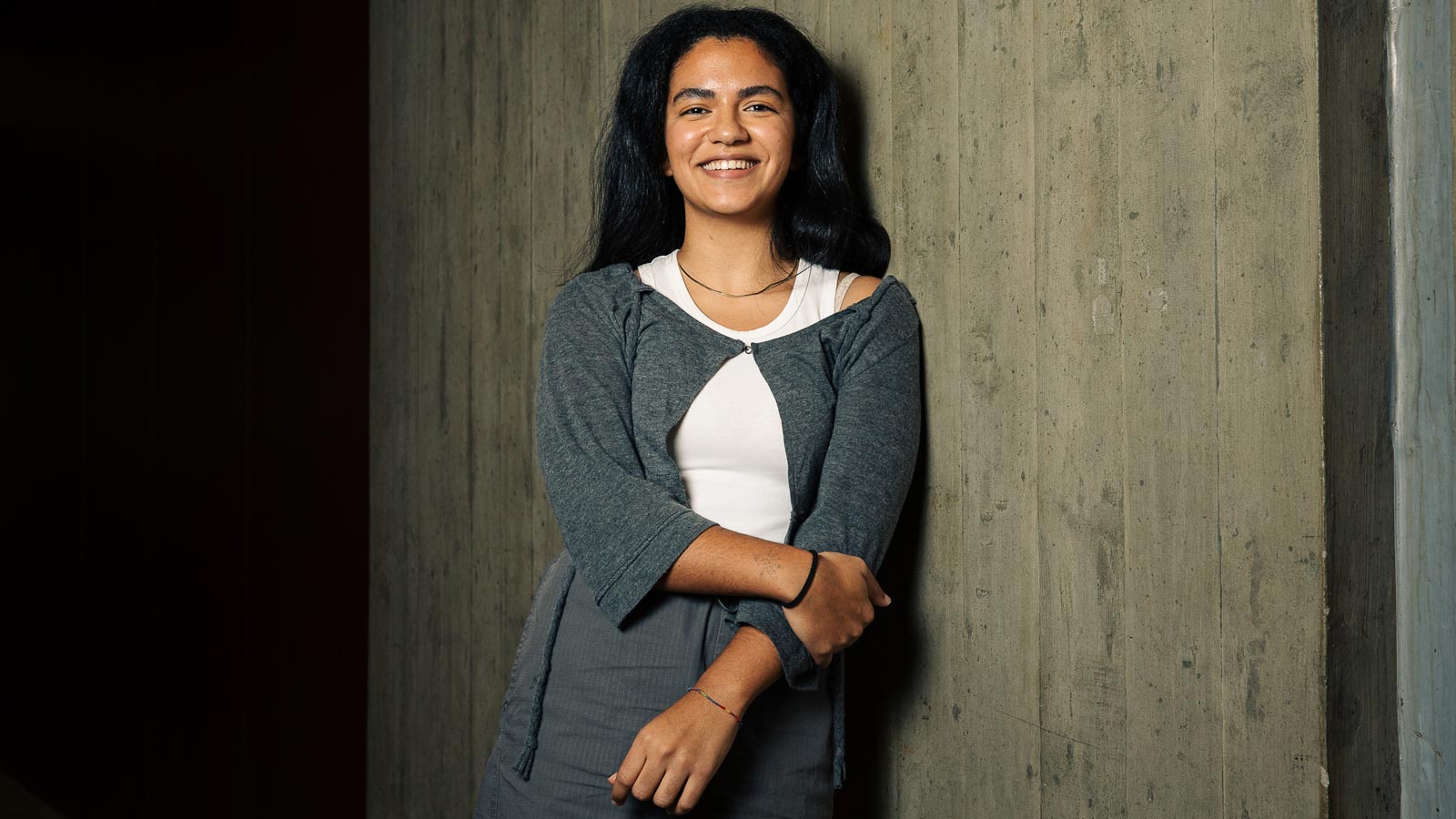‘Whose voices aren’t being heard? I think this is one of the most pressing questions for my generation’
What made you want to take part in the Youth Advisory Group? What did you expect it to be like?
I spent a long time studying in Barcelona, where I saw a lot of promising signs – things like interspecies collaboration, future-forward thinking, future-focused literacy, decolonial and decolonised futures, knowledge being decolonised. I was keen to bring those burgeoning developments back to Portugal.
When I arrived, I saw the Gulbenkian ad. The description, the working group that was being formed and their stated intentions all indicated that this was a group of people who were eager to transcend disciplines and find fruitful points of intersection. I wanted to delve into the realms that exist at the intersections of disciplines and of different people.
Besides having a great deal of respect for the Gulbenkian Foundation as an institution, I didn’t go into this with many expectations. The Gulbenkian brand carries immense weight. The way I saw it, if this was happening here, it must be very important for the reopening of CAM and for a rethinking of the Gulbenkian Foundation as a whole. I wanted to be part of the community that would be formed as part of those efforts.
What is your relationship with cultural institutions in Portugal and abroad?
After one of the sessions with the Live Arts team, Leopoldina (another Youth Advisory Group member) said, ‘I leave my home to attend to my basic needs and to visit cultural institutions. I go out to see art, to experience culture and to attend concerts.’ The same goes for me. When she said that, I thought, ‘It’s true – my relationship with cultural institutions is practically my main reason for going out.’
Ever since I was very young, I’ve had a genuine interest in education and the way in which we acquire knowledge. Public institutions, art institutions, cultural venues – all of these places open up new worlds to us. And that curiosity invariably leads us to spaces where that knowledge is made available to the public. As such, it’s completely natural for me to go to a museum because I want to know more about this or that – dinosaurs, maybe, or Van Gogh.
More specifically, before this project, what was your relationship with the Gulbenkian Foundation and the Modern Art Centre (CAM)?
I used to attend a lot of debates and discussion events at CAM. I don’t know whether I’ve ever seen an exhibition at CAM; I don’t recall. My first relationship with this institution was through the debates held here, often with a scientific or related theme.
I was at university in Lisbon at this time, so I began regularly visiting these spaces of my own volition. I visited the Garden a lot, too – what an amazing space! More recently, Lisboa Criola at the Gulbenkian Garden completely disrupted my whole idea of the institution. ‘This is what it’s all about!’ I thought. ‘Here’s a sign that things are changing, that there’s something more on the horizon, and new narratives being built.’
I really want to be a part of that narrative. It also exemplified one of the tasks that the Youth Advisory Group would take on: constructing new narratives that include more people from the outskirts, the diaspora, and so on.
How would you envision an institution that fully responds to the needs of young people? In other words, if it were possible to make everything absolutely perfect, what would that utopia look like?
One person’s utopia is another’s dystopia. Creating an institution made up exclusively of young people would mean that others get left out. But if we built a branch of Gulbenkian exclusively for young people, I think this would require a certain energy and newness. The voices of the young need to be part of the overall picture.
We have to give this specific group its own stage or platform if we are to properly collaborate and intervene to allow their voices to be truly incorporated into the structure and culture of an organisation, so that the same old gaps don’t open up again. Whether actively or unconsciously, we don’t want to exclude the very group of people who will be the future of our nation.
If they don’t have access to culture or are unaware that they have access – due to a lack of information – we’re left with an audience of young people with almost zero diversity, from a certain socioeconomic group. This would signal that the message that we’re sending is not appealing to those on the margins of society. Why? Because we have a history of casting a spotlight on artists of high renown.
Gulbenkian is seen as a giant of the art scene, a place that can offer something to people who don’t need anything else. To outsiders, at least, it is not known for giving a stage to young people. That image hurts us all, and that’s what we need to deconstruct.
My utopia would be a Gulbenkian that doesn’t look like a fortress. It’s set within a garden, but that’s not the only important thing. It’s about what lies within, what’s hidden among the trees: art and artists that have a collaborative spirit, that have something to teach. There’s also this habit of wanting someone who is 24 years old, but has 50 years of experience. That’s impossible! People gain experience by living and learning.
We need to unpick our desire for genius artists and keep on working to make sure that artists receive the support they need, not just during the term of their grants, but through regular ‘check-ups’. How’s it all going? Can we provide any contacts to facilitate your work? Why didn’t things go so well? Why haven’t we heard about this artist yet? We should be asking all of these questions. But most importantly, we need to ask this one: whose voices aren’t being heard? I think this is one of the most pressing questions for my generation.
What will your academic background and personal journey bring to the Youth Advisory Group?
There are nine of us. Each one has had a very different journey. I studied biology at university, but I could sense the walls there, too, so this issue of the Gulbenkian having walls that exclude people is something familiar to me. I tried to break out of those walls and work out how we can replace them with a sort of permeable membrane, so that everyone can contribute and benefit.
Having obtained a degree in biology, I was still on that quest, so I went on to study design. I ended up encountering different techniques, ways of thinking, pools of thought that a person can dive into and realise that there’s a whole other world there, but it’s not only about that world; it’s also about what exists in every word and in every sign: there’s a whole universe within. That was a massive revelation to me, because for a long time my world had been science. But I intuitively felt that there were things beyond science and I really wanted to explore them. Design made that possible for me.
Thanks to the skills and tools that science has given me, I have a capacity for synthesis and argumentation, which really helps me in identifying the connections between different worlds. I see my role within the Group as connecting and pinpointing intersections and emerging futures. I think this instinct stems from my Master’s degree in design, where I worked on emerging futures and collaborated closely with communities on localised and contextualised interventions. That experience has given me lots of tools to deal with complex, interconnecting spheres of life and transform abstract knowledge into something more manageable, more utilitarian.

What are your first impressions of the team? How are you all working together so far?
The first stage was finding out who we all are as individuals – our names, whether we’re from Lisbon or elsewhere, that sort of thing. Then it was a matter of working out how each of us fitted into the Group, because we were starting to think as a collective intelligence. For instance, Joel might say one thing, Ema says another, and I put the two together and say, ‘Okay then, how about this?’ It’s like putting together a recipe. We’re already cooking up ideas for CAM to use. Each of us is like an ingredient or technique, and it’s about finding the unison within that chaotic mix.
Besides Live Arts, you’ve also met with the Collections, Exhibitions and Curation teams. What did you like the most? What did you think about these sessions with the teams?
My favourite was the last one, Live Arts. I’m still buzzing from the whole experience.
The teams are all fantastic, very open. We can ask questions and really challenge them. We can be critical, but we’re fairly easy-going at the same time. We soon realised that an institution may be motivated to do something, but it’s nevertheless a challenge to get hundreds of people on board around an idea. And that takes time. The group has already recognised this, and it was thanks to the teams, who were completely frank and transparent about the way things are done here, so we soon understood the reality.
We want to be useful and bring about change, but we have to work within the scope of what is possible. This is meant to be a collaboration; it’s not simply us stating our wishlist for what a youth-focused institution should be. We want to open new doors, get things flowing and draw more people in. This isn’t just coming from the Group.
We proceed in lockstep with the teams, and it has been truly rewarding. Our work together with them during the sessions, and also the time in between sessions where we think about how we can benefit CAM.
So you really enjoyed the session with the Live Arts team.
Yes, that was my favourite, because it dealt with emergent issues. While the Curation, Exhibition and Collections teams have to have their feet planted firmly on the ground, Live Arts manages to escape the restrictions of the physical space. It can happen on the street, on a roundabout or wherever they want. They’re the only team that, despite the ongoing construction work on the building, have continued to do their thing.
This session showed us that CAM is heading in a direction that has the potential to attract audiences never before seen within the Gulbenkian and CAM space. It left me eagerly awaiting the upcoming sessions.
In your application, you said that there are barriers that can only be broken down as a community. What barriers were you talking about? What causes them?
I think they’re caused by the ego, but that ego comes apart when we come into contact with other people. Yes, we have rights, but we also have responsibilities. We’ve managed to find a bridging point, a place where these waters meet. As we said during the session with the Curation team, this meeting of waters and cycles is very important.
We can do a lot better if we work on our preconceived ideas, which may even include discriminatory notions, as a community, together.
In the specific case of a cultural institution, what do you see as a barrier?
A barrier might be something related to communication, the ways we are used to communicate with others. To give an example, if I don’t state my pronouns, someone who doesn’t identify with a heteronormative culture or society may feel more apprehensive about entering that space. ‘It’s 2024 and they’re not stating pronouns. What does that mean about their attitude towards me? Is it a good idea for me to visit that space?’ This is one of the barriers that could be removed for a certain community.
Another might be, ‘Whenever I see exhibitions, they’re by white artists. Why aren’t there artists of other ethnicities?’ I think people ask themselves all these sorts of questions. It is these barriers that the Group is actively trying to deconstruct.
How can we democratise cultural spaces in the light of those concerns?
Democratisation is one of the most discussed issues in the Group. After all, our society is so diverse, and that’s precisely what’s so strong and distinctive about our culture.
The name ‘Gulbenkian’ has a certain weight to it, as a result of its legacy and rich history. Many people have always seen this name as something rather alien, rather than as part of their lives. That may be the reason why they have no interest in being there, but it could also be because this space has never shown interest in having this type of person as part of its audience.
This is where accessibility and democratisation come into play. The CAM in Motion initiative is a fantastic example of such efforts. Being able to access Gulbenkian for free is simply marvellous. But how do people get there? These kinds of issues can have an enormous impact. Another problem is that public transport to Lisbon runs on a much more limited timetable at the weekend. People want to visit, but they can’t, because they don’t have access.
Of course, such impediments may be caused by the institution itself, which means that they are an internal issue that can be resolved, but sometimes the society around it needs to change, too.
Before you met the Collections team, they asked you to select two works. You chose ‘Flor de Algodão’ [Cotton Flower] by Raquel Maria and White Horse by Lida Abdul. Why did you choose these two works?
I had never seen White Horse before, but when I saw the images of a non-white horse being painted white, my immediate thought was, ‘Once the horse has been painted white, it will be worth more.’ I wanted to watch the video and see what would happen. That was why.
I was initially drawn to Flor de Algodão by the subtlety of the colours. Then, when I realised that the flower depicted was the cotton flower, it also appealed to my interest in science and art, as it touches upon botany, science, art and history. After all, the cotton flower is a plant that is associated with human suffering. Of all the other plants, perhaps only cocoa is comparable in this sense, as a crop related to slavery.
When I saw that painting, I said to myself, ‘I want to see that live.’ And when I did come face to face with it, I had the startling impression that the base of the painting was like living flesh: the roots of the flower seemed to be sitting not in soil, but in flesh.


Finally, what do you expect from the new Youth Advisory Group?
I always say that I don’t have and I don’t like having any expectations, but you always end up having some anyway. I’m trying to take it one day at a time, do every task properly and be as present as possible in each of the sessions. We’re already making our presence felt at CAM, and I’ve always been made to feel very welcome by the team. This is a huge indicator of the openness of the institution and a promising sign of what the future holds for CAM.
There’s a great willingness to listen to and collaborate with us. It’s a real pleasure to have these sessions and be with the teams working together. I hope that by the time that CAM reopens, the Group will be able to feel that it has played a part.
Of course, not everything we suggest can be implemented, at least not immediately. But it’s good to feel like we are having an impact, even if it’s simply because we were here and made our presence felt. I believe that whole forests can grow from the tiniest seeds. So it seems that I do have big expectations after all!
Suggestions
Book: ‘A Decolonial Ecology: Thinking from the Caribbean World’, by Malcom Ferdinand.
Music: ‘Mercy Mercy Me (The Ecology)’, by Marvin Gaye.
Film: ‘Abstract: The Art of Design’; ‘Neri Oxman’ (series).

